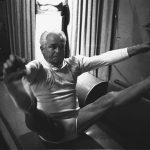Many people come to Pilates after suffering from a bad back. It’s estimated that 80 per cent of us will at some point have back pain, particularly if you sit at a desk all day. So how can Pilates help?
Pilates can work around the back rather than just on it. Typically someone with a bad back may have weak core muscles, that is the muscles around the stomach and the spine and around the buttocks (the gluteals or glutes). Such weaknesses can lead to tight hamstrings and the lumbar spine or lower back being pulled into a tilt, causing muscle spasms and back pain. The core muscles have been likened to a corset around the trunk. Reformer and mat Pilates can help strengthen these core areas and improve your posture so that less strain is put upon the back.
Postural Habits
Many people suffer from bad posture habits, such as crossing legs when seated, slumping in chairs or sinking into one hip while standing up. Pilates will help correct these imbalances and an instructor will spot if there is pelvic misalignment or one leg is working harder than the other. Standing or sitting with a tall spine will create more space between the discs in your back and lessen the pressure on your back. Once you start Pilates you’ll find it easy to incorporate healthy movement into your day-to-day life too.
Another benefit is that Pilates will generally improve all-round flexibility. Sitting at desks, often with chairs and screens at the wrong height or hunching over a phone creates a rounded back posture. Pilates exercises aim for a neutral spine, emphasising the natural curve of the back. By freeing up the segments of the upper spine this can lessen the pressure on the lower back.
Low Impact Exercise
Reformer Pilates can work around an injury and be performed lying down. It is a low impact exercise for a tender back, although if anything hurts it’s advisable to stop and get advice. The Reformer allows your teacher to modify resistance to adapt to particular factors such as your age or type of problem. While plenty of mat exercises can be utilised to strengthen your back, including pelvic tucks where both legs are swung from side to side, hip stretches, bridges, half or full planks, the clam, the cat cow, spinal twists, pelvic curls, the dead bug, toe-curls and many more.
Conventional Medicine
Conventional medicine tends to treat the symptoms of back pain rather than the underlying causes. By strengthening core muscles and helping with better posture and enhanced flexibility Pilates aims to provide a long-term solution to back pain and prevent future problems. Better core strength and posture will help you walk taller and keep your spine feeling younger and pain free.
Disclaimer: It is essential to consult with a healthcare professional such as a doctor or physiotherapist before taking up Pilates if you have pre-existing back pain.
If you would like our newsletter you can subscribe on the Home page. Follow us on social media:
Facebook | Instagram | X | Linkedin.
The Pilates Central Team
(Image credit: Simon HUMLER, unsplash.com)


